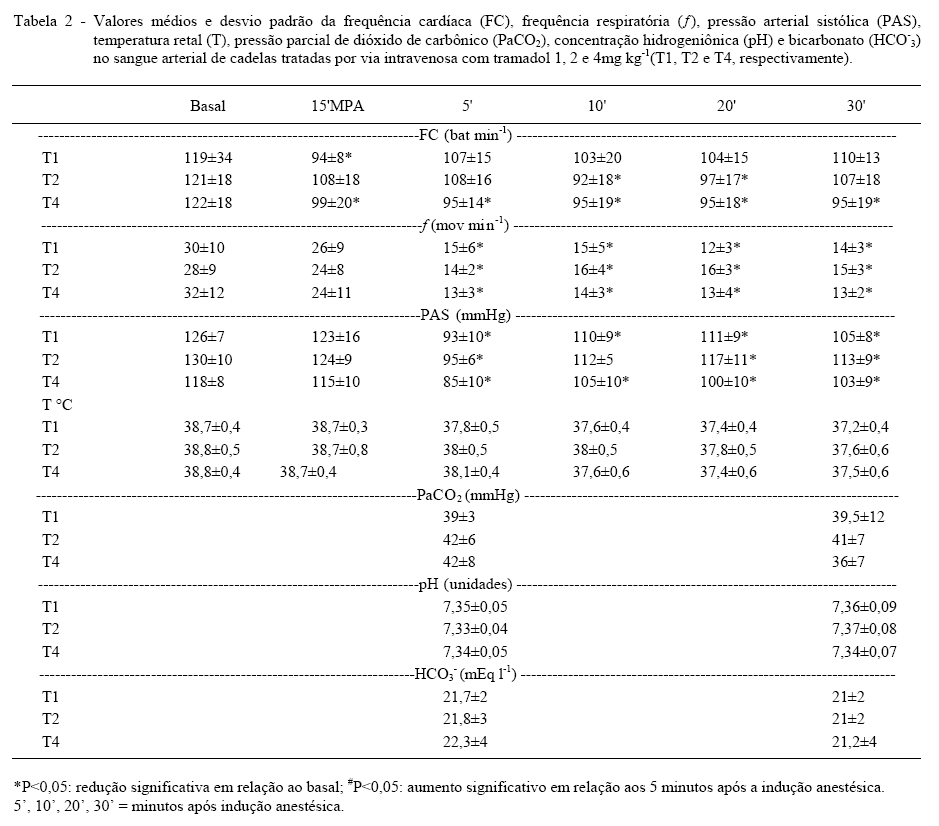The aim of this study was compare the cardiopulmonary, analgesic and sedative effects of different doses of tramadol in bitches undergoing to ovariohysterectomy. Twenty four adult crossbreed bitches were randomly assigned to three treatments of 8 animals and received intravenously (IV) tramadol 1, 2 or 4mg kg-1 (T1, T2 and T4, respectively). Pre-anesthetic medication was acepromazine (0.05mg kg-1 IV). Anesthesia was induced with propofol (4mg kg-1 IV) and maintained with isoflurane delivered in oxygen. Tramadol was administered 5 minutes before surgical incision in all groups. Heart rate, respiratory rate, rectal temperature, systolic blood pressure, degree of analgesia and sedation, serum cortisol concentration and adverse effects were measured. Mild changes were observed in cardiopulmonary variables in all treatments. The pain score was lower in T4 in the 3rd hour after surgery in relation to other treatments. Sedation degree was not different among the treatments. The serum cortisol did not differ among the groups. In conclusion, different doses of tramadol promoted similar analgesic effects, with mild sedative and cardiopulmonary effects. However, high incidence of vomiting was observed with tramadol at 4mg kg-1 in bitches undergoing ovariohysterectomy.
opioid; analgesia; cortisol; ovariohysterectomy; canine



